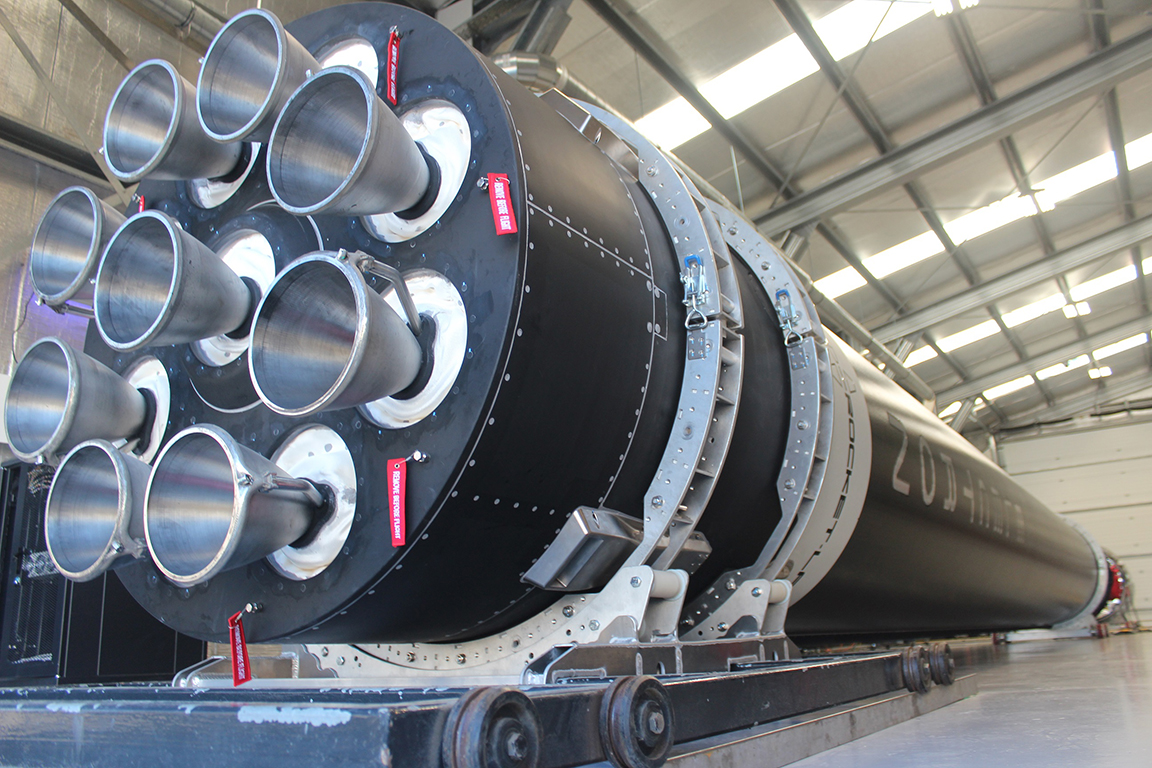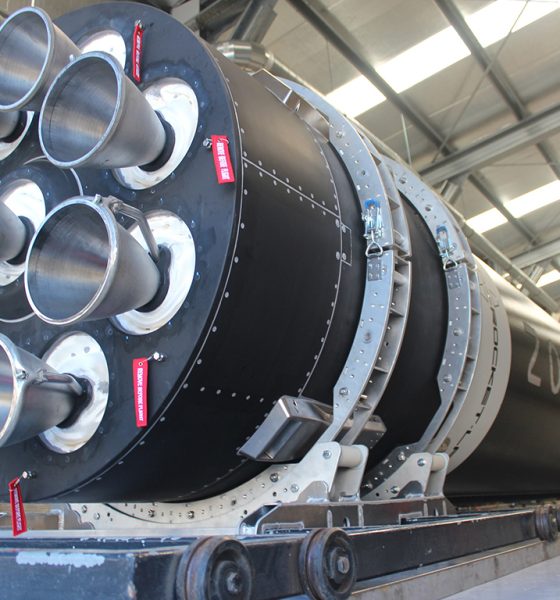

News
Rocket Lab channels SpaceX-like rapid launch capability in July 4 Electron mission
The prominent launcher of dedicated small satellite launches, Rocket Lab, looks to achieve SpaceX-like rapid launch capability of its Electron rocket. The company is targeting its shortest turn around time between missions from the same launch pad. Just three weeks ago, Rocket Lab returned to operational launch status following the easement of Covid-19 restrictions at the company’s Launch Complex 1 in Mahia, New Zealand. The Electron rocket completed its twelfth mission nicknamed “Don’t Stop Me Now” which supported a rideshare payload of five smallsats to orbit. Now, Rocket Lab is ready for its third mission of 2020 – the second in just three weeks – with Electron’s thirteenth mission “Pics Or It Didn’t Happen.”
The launch window for #PicsOrItDidntHappen opens on 3 July UTC. Lift-off will take place from Rocket Lab Launch Complex 1 Pad A on the Mahia Peninsula. pic.twitter.com/01sDCXVj03
— Rocket Lab (@RocketLab) June 15, 2020
Rideshare mission of space cameras
The “Pics Or It Didn’t Happen” mission features a rideshare manifest consisting of seven small satellite payloads for customers Planet, In-Space Missions, and rideshare and mission manager Spaceflight Inc.’s customer Canon Electronics. The majority of payloads are Earth-imaging satellites inspiring the “Pics Or It Didn’t Happen” mission nickname. The primary payload, Canon Electronics Inc.’s CE-SAT-IB microsatellite, will demonstrate the company’s high definition and wide-angle Earth-imaging capabilities and will serve as a testbed for future opportunities of mass production. Also aboard Electron is five of Planet’s latest generation SuperDove (Flock4e) Earth-observation satellites equipped with new sensors to produce higher quality images of Earth’s landmass on a near-daily basis. The UK enterprise In Space Missions provides the final payload with its maiden Faraday-1 6U CubeSat. According to In Space Missions, Faraday-1 is “the first in a series of satellites that will provide a turnkey service for commercial customers and research organizations wanting to access to space at a competitive and affordable cost.” Currently, In Space Missions has four more satellites under contract with the Faraday service.
Rocket Lab’s carbon composite Electron booster propelled by nine 3D-printed Rutherford sea-level engines capable of 36,000lbf (162kN) of thrust will send all payloads to a 500km sun-synchronous low Earth orbit at an inclination of 97.5 degrees.
It's almost time to go to space! Today's mission will see seven small sats launched to a 500 km circular orbit for @SpaceflightInc customer @Canon, as well as small sat operators @planetlabs and @Heads_InSpace. pic.twitter.com/mMKENVBeLa
— Rocket Lab (@RocketLab) July 4, 2020
Rapid launch capability within reach
According to Rocket Lab, a new Electron booster is produced in-house approximately every eighteen days at its production facility in Auckland, New Zeland. While Electron currently only launches from Launch Complex 1 on New Zeland’s Mahia Peninsula, Rocket Lab looks to further open small satellite access to orbit and expand its launching capabilities with two more operational launch complexes targeted to begin service later this year. The Mahia Peninsula location has recently undergone expansion, adding the neighboring Launch Complex 1B while a third launch location, Launch Complex 2, has been opened at the Mid-Atlantic Regional Spaceport in Wallops Island, Virginia.
Lots of launch pads, we got ‘em. Electron is on the pad at LC-1A this week with a front row view of construction progress on LC-1B. pic.twitter.com/ijZAVRc6yV
— Rocket Lab (@RocketLab) July 1, 2020
Rocket Lab Founder and CEO, Peter Beck, states that multiple launch locations “enables our small sat operators to do more, spend less, and get to orbit faster” and that “Rocket Lab has eliminated the small sat waiting room for orbit. We’ve focused heavily on shoring up our rapid launch capability in recent years and we’re proud to be putting that into practice for the small sat community with launches just days apart.”
The rocket backlog. pic.twitter.com/AhHlbNvEmq
— Peter Beck (@Peter_J_Beck) May 15, 2020
With an expansive backlog of Electron boosters, Rutherford engines, and the capability to soon launch missions back-to-back from neighboring launchpads Rocket Lab aims to break into the market of rapid launch capability joining the likes of SpaceX and its Falcon 9 rocket which has launched 91 times (89 times successfully) since 2010. The company also looks to break into the booster recovery market also pioneered by SpaceX.
Earlier this year, Rocket Lab completed a successful mid-air recovery demonstration of a parachute equipped test article with a helicopter and a specially designed grappling hook. Beck recently revealed on Twitter that Rocket Lab is targeting the seventeenth flight of the Electron to debut fully operational recovery efforts of the first stage booster to occur at some point before year’s end.
The “Pics Or It Didn’t Happen” mission previously scheduled for July 3rd, moved to July 5th, then pushed up to July 4th is now targeting liftoff NET 21:19 UTC/5:19 pm EDT from LC-1 in New Zealand taking advantage of more favorable launch weather conditions. Rocket Lab has stated on Twitter, however, that there is a “relatively high chance” of the launch attempt scrubbing to a later date as the possibility of high ground winds still persists. Should they be needed, backup launch opportunities extend through July 16th.
The “Pics Or It Didn’t Happen” Electron and payload are currently vertical at LC-1 ahead of the launch attempt. A Livestream of the effort will be made available approximately fifteen minutes ahead of liftoff posted to the company’s social media accounts and available on the company’s website: www.rocketlabusa.com/live-stream.

News
Tesla FSD fleet is nearing 7 billion total miles, including 2.5 billion city miles
As can be seen on Tesla’s official FSD webpage, vehicles equipped with the system have now navigated over 6.99 billion miles.

Tesla’s Full Self-Driving (Supervised) fleet is closing in on almost 7 billion total miles driven, as per data posted by the company on its official FSD webpage.
These figures hint at the massive scale of data fueling Tesla’s rapid FSD improvements, which have been quite notable as of late.
FSD mileage milestones
As can be seen on Tesla’s official FSD webpage, vehicles equipped with the system have now navigated over 6.99 billion miles. Tesla owner and avid FSD tester Whole Mars Catalog also shared a screenshot indicating that from the nearly 7 billion miles traveled by the FSD fleet, more than 2.5 billion miles were driven inside cities.
City miles are particularly valuable for complex urban scenarios like unprotected turns, pedestrian interactions, and traffic lights. This is also the difference-maker for FSD, as only complex solutions, such as Waymo’s self-driving taxis, operate similarly on inner-city streets. And even then, incidents such as the San Francisco blackouts have proven challenging for sensor-rich vehicles like Waymos.
Tesla’s data edge
Tesla has a number of advantages in the autonomous vehicle sector, one of which is the size of its fleet and the number of vehicles training FSD on real-world roads. Tesla’s nearly 7 billion FSD miles then allow the company to roll out updates that make its vehicles behave like they are being driven by experienced drivers, even if they are operating on their own.
So notable are Tesla’s improvements to FSD that NVIDIA Director of Robotics Jim Fan, after experiencing FSD v14, noted that the system is the first AI that passes what he described as a “Physical Turing Test.”
“Despite knowing exactly how robot learning works, I still find it magical watching the steering wheel turn by itself. First it feels surreal, next it becomes routine. Then, like the smartphone, taking it away actively hurts. This is how humanity gets rewired and glued to god-like technologies,” Fan wrote in a post on X.
News
Tesla starts showing how FSD will change lives in Europe
Local officials tested the system on narrow country roads and were impressed by FSD’s smooth, human-like driving, with some calling the service a game-changer for everyday life in areas that are far from urban centers.

Tesla has launched Europe’s first public shuttle service using Full Self-Driving (Supervised) in the rural Eifelkreis Bitburg-Prüm region of Germany, demonstrating how the technology can restore independence and mobility for people who struggle with limited transport options.
Local officials tested the system on narrow country roads and were impressed by FSD’s smooth, human-like driving, with some calling the service a game-changer for everyday life in areas that are far from urban centers.
Officials see real impact on rural residents
Arzfeld Mayor Johannes Kuhl and District Administrator Andreas Kruppert personally tested the Tesla shuttle service. This allowed them to see just how well FSD navigated winding lanes and rural roads confidently. Kruppert said, “Autonomous driving sounds like science fiction to many, but we simply see here that it works totally well in rural regions too.” Kuhl, for his part, also noted that FSD “feels like a very experienced driver.”
The pilot complements the area’s “Citizen Bus” program, which provides on-demand rides for elderly residents who can no longer drive themselves. Tesla Europe shared a video of a demonstration of the service, highlighting how FSD gives people their freedom back, even in places where public transport is not as prevalent.
What the Ministry for Economic Affairs and Transport says
Rhineland-Palatinate’s Minister Daniela Schmitt supported the project, praising the collaboration that made this “first of its kind in Europe” possible. As per the ministry, the rural rollout for the service shows FSD’s potential beyond major cities, and it delivers tangible benefits like grocery runs, doctor visits, and social connections for isolated residents.
“Reliable and flexible mobility is especially vital in rural areas. With the launch of a shuttle service using self-driving vehicles (FSD supervised) by Tesla in the Eifelkreis Bitburg-Prüm, an innovative pilot project is now getting underway that complements local community bus services. It is the first project of its kind in Europe.
“The result is a real gain for rural mobility: greater accessibility, more flexibility and tangible benefits for everyday life. A strong signal for innovation, cooperation and future-oriented mobility beyond urban centers,” the ministry wrote in a LinkedIn post.
News
Tesla China quietly posts Robotaxi-related job listing
Tesla China is currently seeking a Low Voltage Electrical Engineer to work on circuit board design for the company’s autonomous vehicles.

Tesla has posted a new job listing in Shanghai explicitly tied to its Robotaxi program, fueling speculation that the company is preparing to launch its dedicated autonomous ride-hailing service in China.
As noted in the listing, Tesla China is currently seeking a Low Voltage Electrical Engineer to work on circuit board design for the company’s autonomous vehicles.
Robotaxi-specific role
The listing, which was shared on social media platform X by industry watcher @tslaming, suggested that Tesla China is looking to fill the role urgently. The job listing itself specifically mentions that the person hired for the role will be working on the Low Voltage Hardware team, which would design the circuit boards that would serve as the nervous system of the Robotaxi.
Key tasks for the role, as indicated in the job listing, include collaboration with PCB layout, firmware, mechanical, program management, and validation teams, among other responsibilities. The role is based in Shanghai.
China Robotaxi launch
China represents a massive potential market for robotaxis, with its dense urban centers and supportive policies in select cities. Tesla has limited permission to roll out FSD in the country, though despite this, its vehicles have been hailed as among the best in the market when it comes to autonomous features. So far, at least, it appears that China supports Tesla’s FSD and Robotaxi rollout.
This was hinted at in November, when Tesla brought the Cybercab to the 8th China International Import Expo (CIIE) in Shanghai, marking the first time that the autonomous two-seater was brought to the Asia-Pacific region. The vehicle, despite not having a release date in China, received a significant amount of interest among the event’s attendees.








